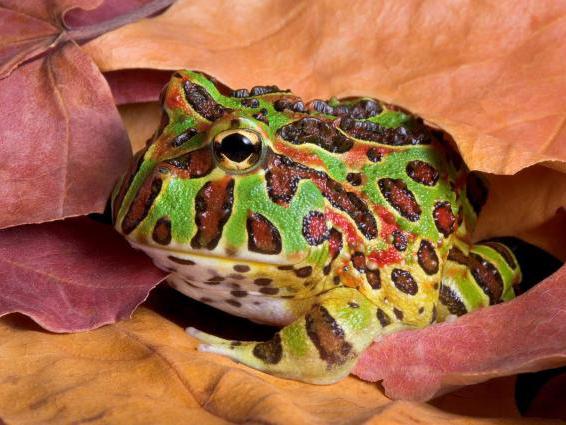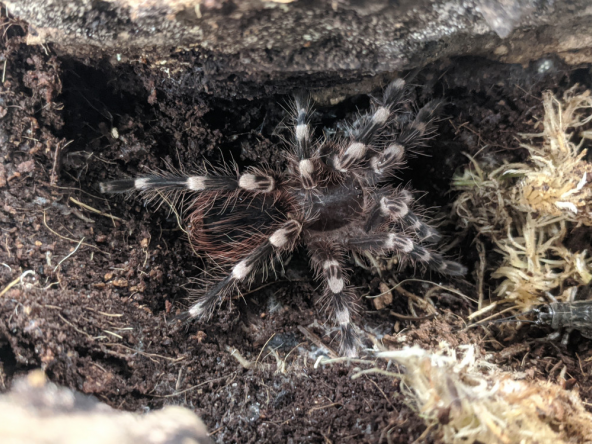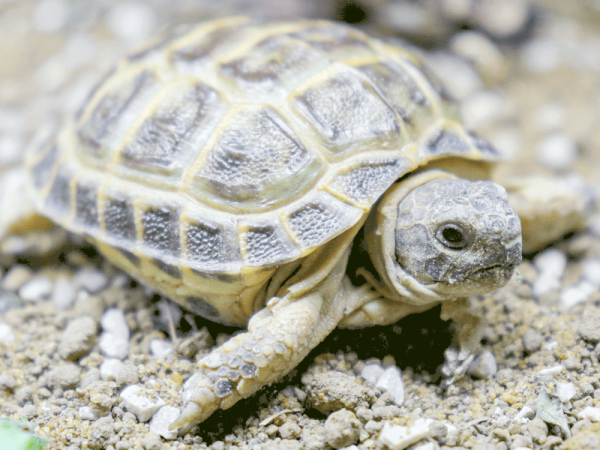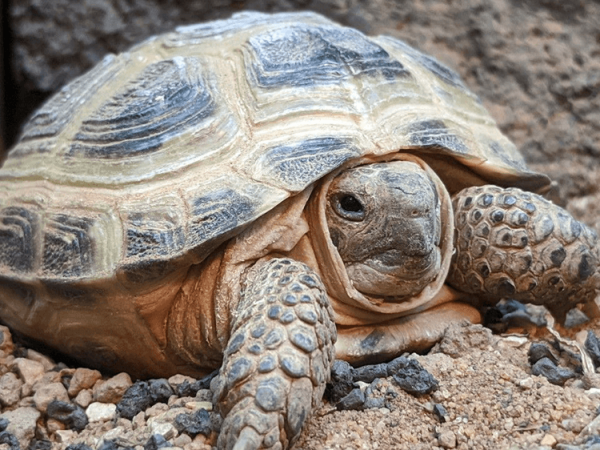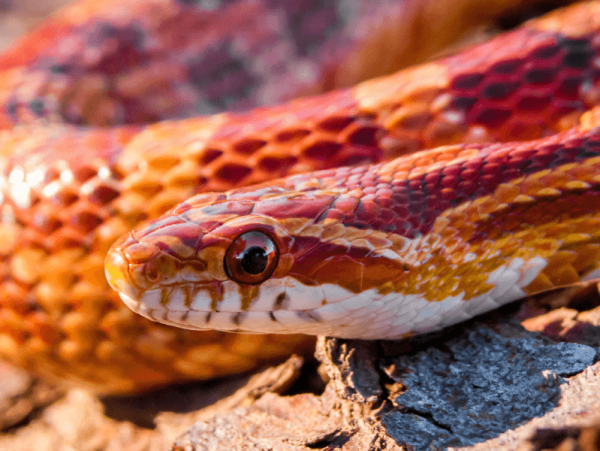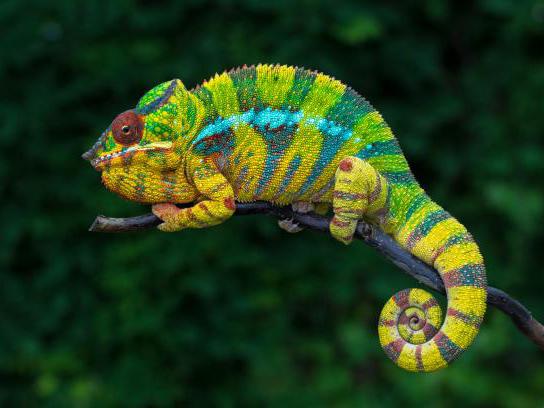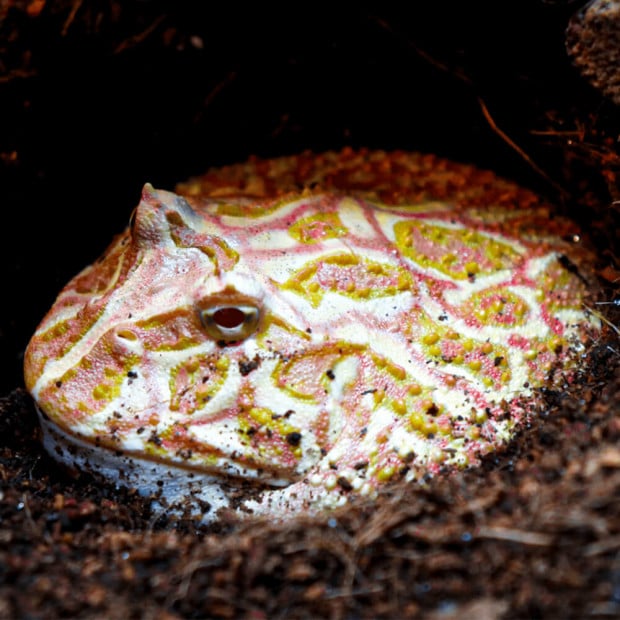Optional extras
Pacman frog, Ceratophrys sp., care sheet
Categories: Care sheetsAmphibians
Do you want something cute, creepy and different to any pet you’ve ever had before? Then the Horned frog or Pac-Man frog could be for you. Native to forests in Argentina, Paraguay and Brazil, these fat frogs with cartoon faces are voracious ambush predators, hiding amongst the leaf litter for unsuspecting prey to stray too close to their capacious mouths.
The green and brown marking on wild specimens camouflage them perfectly and they spend almost their entire lives hunkered down on the forest floor, motionless, waiting for a meal. They’ll eat anything from worms and insects to small snakes, mice, frogs and even their own kind, so in captivity they should be kept on their own.
There are several different species of Pacman frog commonly available in the pet trade, such as the most popular Cranwell's pacman frog (C. cranwelli), the Ornate pacman frog (C. ornata), the Surinam pacman frog (C. cornuta) and more.
Housing
Although they hardly ever move, adult horned frogs can grow to 8” in diameter so deserve a terrarium of at least 60x45cm. Height is not important as they don’t climb, but the substrate should be deep soil so that they can burrow into it.
Burrowing is very important to these frogs and loose substrates such as soil will be the only way to provide them with this opportunity. There are a number of variations of soil substrates and its good to research as some may be beneficial to any live plants you include in your habitat as well.
Drainage layers, including drainage substrate and matting, can be added to aid humidity but remember these frogs are good at digging and may reach these layers if the soil section isn't deep enough.
As well as soil, moss and leaf litter make good additions to your terrarium. These help mimic the frog’s natural environment and are beneficial for humidity and enabling better cover to reduce stress.
Once your forest floor is created, décor such as cork bark, rocks and foliage will make good enrichment opportunities for your animal. They will also keep your animal mentally stimulated which is beneficial to their health, as well as making your enclosure aesthetically pleasing. A water dish can be provided in larger vivs, aiding humidity and giving the frog the opportunity to sit in the water if it wants to.
Heating and lighting
To provide the best habitat for your frog use a basking lamp to create a basking area of 28°C. This temperature should only be present on one side of the tank to allow escape, with the general temperature gradient in the rest of the enclosure between 22 and 25°C. Bulbs should always be thermostatically controlled to avoid overheating.
During the night, your heating system can be switched off and your terrarium allowed to cool to between 15 - 20°C. This is natural for them to experience this nighttime drop and creates a good night/day cycle.
Next is a UV bulb. The benefit of UV with your frog is that it creates a more natural setting, it benefits your frog’s health and it would be exposed to UV in the wild, albeit in low levels. Both bulbs should be used in a 12 hour cycle, switched off at night to create day and night periods. UV bulbs have a lifespan of 6-12 months depending on the brand, so make note of the date you purchased the bulb.
Water
Water used for spraying substrates and water dishes should be properly dechlorinated beforehand, which can be done using a reptile safe liquid dechlorinator. Water dishes should be cleaned frequently to prevent bacteria growth and temperature and humidity in the enclosure measured with a thermometer and hygrometer.
Mould grows in warm, humid environments so remove any visible growths, churn the soil and add cleaner insects which will eat the mould when it grows.
Feeding
Your frog should be fed on an insectivorous diet including crickets, locusts, cockroaches, and earthworms. Dust all food with good quality calcium and multivitamin powders so your frog receives all the required nutrients through their diet. Calcium is essential in bone development and multivitamins will aid bodily functions.
Frogs are also prone to neurological issues so extra vitamin A is beneficial to their bone and tissue growth. Vitamin A aids vision, skin health and the immune system. As a protein boost, you can offer your frog the occasional pinkie mouse, though this shouldn't be done too often as it will lead to higher quantities of fat and protein than is needed.
Shopping list
- Vivarium
- Heat source
- Thermostat
- UVB Lighting
- Thermometer
- Hygrometer
- Water bowl
- Substrate
- Hides
- Decoration
- Calcium, Multivitamin, Vitamin A
- Cleaning Equipment
- Spray bottle
- De-chlorinator
Species fact file
Name: Horned frog, Pac-Man frog
Scientific name: Ceratophrys sp.
Lifespan: 5 - 6 years
Length: 4 - 8inch
Origin: South America
Vivarium Size: 60x45x30cm
Temperature gradient: 22 - 28°C
Humidity: 60 - 80%
Lighting: Low - Mid-level UVB
Feeding: Live food
NOT FOR HANDLING - Amphibious species have extremely sensitive skin, which can be damaged and cause discomfort for them when in contact with ours.
Jeremy Gay is an author, lifelong fishkeeper, and exotic pet specialist. He's a former editor of Practical Fishkeeping Magazine, UK editor at Reefbuilders, a former pet store manager, and has collected wildlife in Sri Lanka and the Amazon. He's been on tv and radio, contributed to Koi Carp and Gardeners World magazines, been a product tester, a judge, and a product developer.




